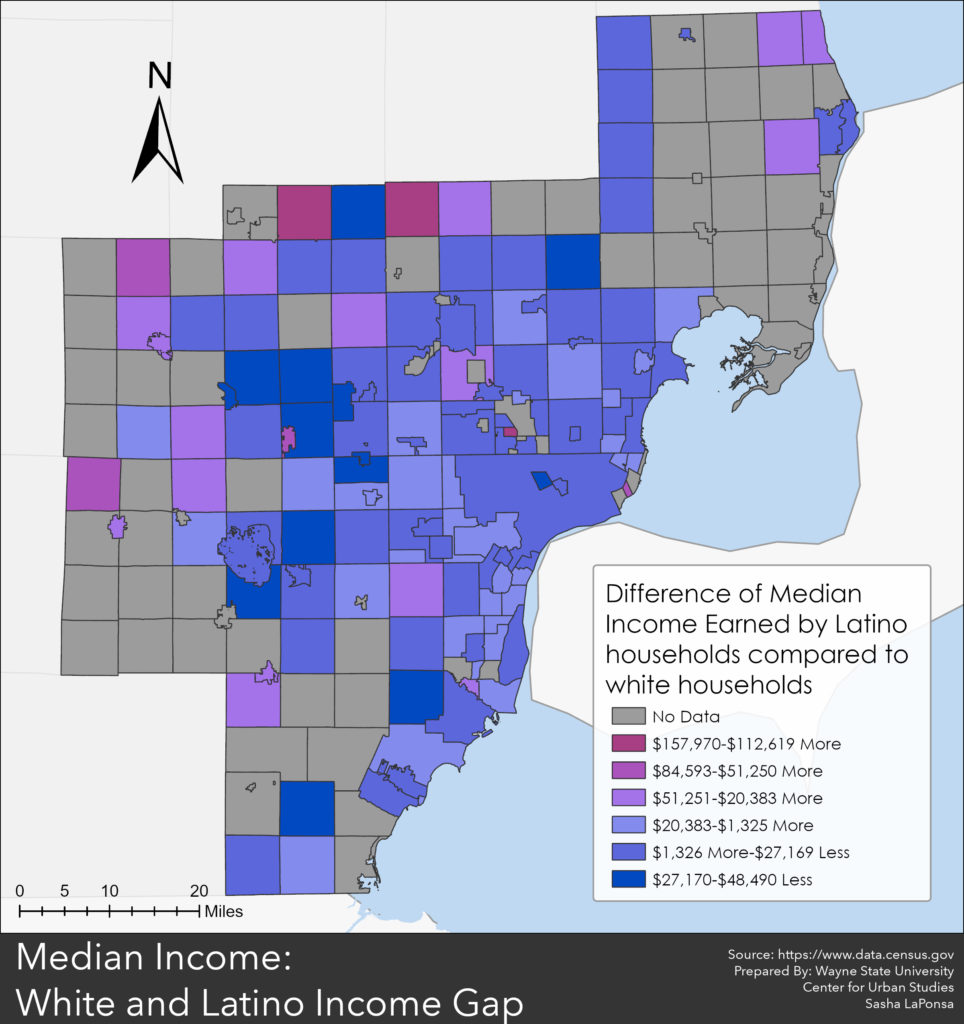Income inequalities exist between several racial groups, and as we highlighted last week, those gaps are often wide when comparing white median incomes to those of minority populations (at the municipal level) in Southeastern Michigan. As we show in this post, that gap exists between the white and Latino populations in the region. However, the largest median income difference between the white population in a community and the Latino population is about $30,000 less than the largest median income difference between a white population and a black population in a community (locally). In other words, the income gap between the white and black populations in Southeastern Michigan is larger than the income gap between the white and Latino populations in the region, according to data from the US Census Bureau.

According to the data, the City of Brighton has the highest median income gap between the white and black populations that live there; this gap is about $48,000. In the City of Brighton the median income for the white population is about $105,000 and for the Latino population it is $57,000. For comparison, Genoa Township, which is also in Livingston County, has the largest median income gap between the white and black populations in the region; this gap is $81,000. When looking at the five communities in the region with the largest median income gap between the white and Latino populations we see that those five communities are in the outer-ring suburbs and that the amounts range from $44,000 to $48,000. Those five communities what the highest gap are: Brighton, Ida, City of Northville, Northville Township and Superior Township.
Overall, there are 74 communities where the median income for the white population is higher than the Latino population. Of those communities, Allen Park has the smallest gap at $698; the median income for the white population is $71,650 and the median income for the Latino population is $70,952.
While there are more communities in Southeastern Michigan where the white population out-earns the Latino population, there are several communities where the median income gap between the Latino and white population is greater for the white population. According to the data, in Holly the median income for the Latino population is $221,121 and the median income for the white population is $63,151; this is about a $158,000 gap. Brandon Township and Huntington Woods also have median income gaps above $100,000 where the Latino population out-earns the white population. In total, there are 60 communities in the region where the Latino population out-earns the white population, according to median income data from the Census Bureau.
According to the Economic Policy Institute, white men make, on average, 30 percent more than Latino men and about 40 percent more than Latino women. This data is just another point in the income inequality discussion that is occurring locally and nationally. While there are specific instances where a minority group out earns other populations the data makes it clear that is not the norm. However, equal and equitable pay should be the norm, as should the opportunities to obtain that pay.